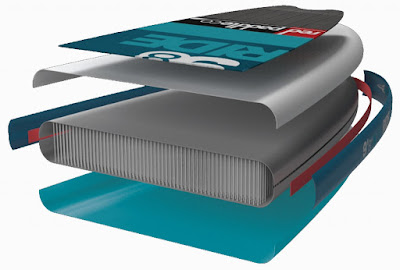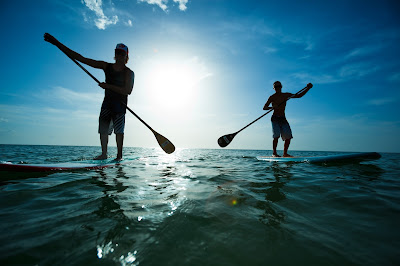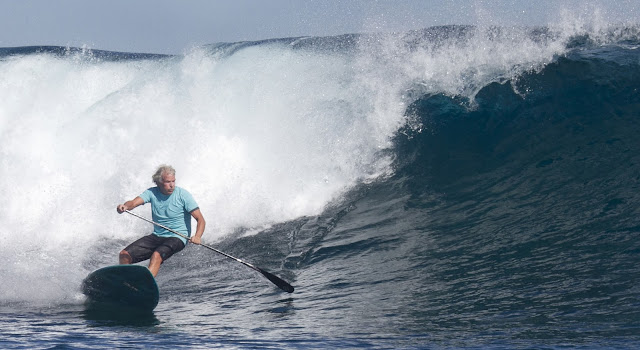Standup Paddle Board Guide
When I first started out learning to Standup paddle board I discovered you need alot of patience and balance. A fair few people said to me oh you need to be really fit for that sport. However I discovered that having the correct paddle board and learning in the right conditions is all you need.My instructor asked me a few questions to help establish the best board for me.
These are as follows:
How much do you weigh?
The heavier you are the bigger the paddle board you need. Sounds like one the those duh answers but with so many questions you do go mind blank.How tall are you?
Same as above with this one really. The taller you are the longer the paddle board needs to be. I had a shorter board than I should when I started and made moving around so much more difficult.Where will you be doing most of your stand up paddling?
Will be doing most of your paddling in calm conditions of more extreme conditions? Will be going for long distance or do you fancy yourself as a more standup surfer?As you can see there are so many questions before youy even jump in the water.
So what is a Standup Paddle Board?
The Standup paddle board all have the same parts to it no matter what style you go for. These are known as nose, tail, deck, bottom, rails and fins. The boards themselves are usually found measured in feet and inches. As I mentioned above certain paddle boarding conditions will dictate what size your board will be. The size and weight of the paddle boarder determines the volume of the boards flotation. The skill level of the boarder will also dictate the above information. | ||||||
| The image above shows the different variations of paddle boards |
The width of the board is also very important and for beginners a wider board will help as it will be more stable. For an average 12st beginner Standup paddle boarder a 28 inch board will be harder to control than a 32 inch wide board.
What are they made of?
Most Stand up paddle boards are what they call the Inflatable type. These boards are very solid once all the layers are put together and inflated. These layers are made from PVC plastic with fibres all woven together. The main reason why these are most popular is their ease of storage. Inflatable boards can be pumped up within ten minutes and be flat packed back down again into a storage bag. This SUP board is ideal for a paddler who plans on using their board on either rivers or calm lakes.If however you see yourself as more of a wave rider after the top performance possible an Epoxy Fibreglass board will be your choice. These have a foam core laminated with fibreglass layers for strength.
 |
| The images above show an Inflatable board and all its layers
and a EPS boards typical construction. |
So where could you use your SUP board?
Flat Water Standup Paddle Board
So these boards are made for more inland paddling. Rivers, lakes and protected coastal areas are all made for this board. Measuring in at between 30 to 34 inches wide and over 10 feet in length these SUP boards have plenty of volume to keep things stable in the flat water.I have touched base with this a little already but I will cover it again. The more volume your board has the easier it is to handle. Again this will depend on the paddlers weight and skill.
Below is a formula to give you an estimate for how much volume you will need for your board.
Beginners - Your weight in kg x 2
Intermediates - Your weight in kg x 1.7
Advanced - Your weight in kg x 1.3
Flat water SUP boards usually have single or 3 fin configrations so that you can choose depending on what paddling your taking part in.
Surf Standup Paddle Board
I think most people see the sport for these boards. Its wave riding time!! This is where you can get very confused as there are many boards on the market for this. The boards style and shape can play a major role with this type of board. As previously covered the more volume the stand up paddle board has the easier to control.
Boards with less volume will be hard work to stand on for long periods but perform better on waves, volume has a key role to play in choosing the type of surfing you aspire to do.
Longer boards with more volume and width will have better paddling glide, speed and also catch waves easier than shorter boards.
Longboard style SUP boards are geared towards catching waves early and enable the rider to cruise and perform classic longboard style maneuvers such as 'walking the nose' and noseriding 'Hang fives'. These boards will usually have a full and rounded nose to them and either have single , 3 or multiple fin configrations.
Shortboard style SUP boards look very similiar to the classic pointier surfboard shape and will be better at more radical slashy and vertical style surfing. These boards are usually narrower in width making them perform turns easier on waves than wider more stable boards. They too will have 3 / multiple fin configrations which will change the boards performance.
Race/Touring Standup Paddle Boards
If its all about speed and paddling from A to B in the fastest time possible then this is the board style for you. You will notice that on the nose of the Racing boards they look a little like a ships hull. The idea behind this is that you should glide through flat or choppy water. You will also find these have a single fin configuration to reduce drag and are very thin. This means that these boards are not made for beginners as they are unstable.The racing classes for competition paddleboards are stock class 12ft 6 inches, 14ft or even unlimited 14ft plus boards.
What you will find with Racing stand up paddle boards is that their increased length will usually mean increased weight unless they are manufatured in carbon.
Boards made from carbon mean a lighter, stiffer construction making them more dynamic in racing.
There is a element to racing called 'down winders' meaning you paddle with the wind blowing in your back taking you downwind of your starting point. This is usually done on longer boards of 14 foot plus length , these boards are long and fast, and enough speed can be gained to catch ocean running swell with the wind behind you , and 'glides' of 50 -100 metres are not uncommon in the best conditions, therefore another cross-over is created with SURF SUP.









